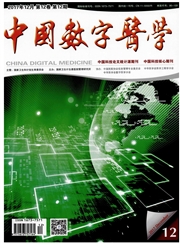

 中文摘要:
中文摘要:
目的:组织或器官微细结构的三维构建一直以来就是医学形态学研究的重要手段。之前的工作已经可以建立组织三维结构,但都通过人工方法处理,费时费力且不能大量构建目标区域。对小鼠肾显微切片小管区域自动识别进行探索,为目标自动追踪打下基础。方法:通过标准连续切片制作和染色方法,并拍照获得肾小管显微图像。对图像进行预处理、二值化、边缘检测、形态学操作、空洞清除、边界识别检测出肾小管边界的位置,从而对肾小管区域进行识别。结果:通过30张图片进行形态学专家人工辨识对比,设计的方法总体准确率在87%。漏检主要存在于小管弯折和过细部位,误检主要存在于肾小球附近。结论:作为肾小管自动追踪和三维重建工作的一部分,证实了自动提取目标区域的可行性,为肾小管的自动跟踪及三维重建做前期工作。
 英文摘要:
英文摘要:
Objective: Three-dimensional(3-D)reconstruction for fine structure of tissue or organ is an important method for morphology study in medicine. 3-D structure has been established in previous work, It is time-consuming and tedious as the procedure is all done manually. In this study, automatic tubules segmentation is studied for automatic tracing. Methods: Kidney sections are processed in a standard sectioning and staining procedure, the captured by a microscope. These images are processed under binarization, edge detection, morphological operations, hole-remove, boundary identification to detect tubular position. Results: 30 images are used to test accuracy rate. Images are identified by morphology experts, and then recognized in this proposed method. The overall accuracy rate is 87%. Undetected tubules are mainly bend or too tiny;false detection are mainly near glomerular. Conclusions:As a part job of automat tracking and three-dimensional reconstruction of tubular, this article is the preliminary work and confirmed the feasibility of automatic extraction of the target tubular.
 同期刊论文项目
同期刊论文项目
 同项目期刊论文
同项目期刊论文
 期刊信息
期刊信息
